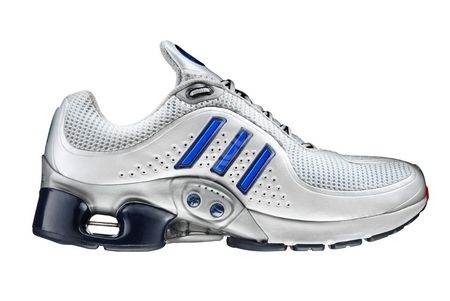A running shoe is a running shoe isn’t it? Well Adidas has opted to go one further than most and fitted its latest running shoe with a microprocessor, but can a computer really help you run better?
Our quick take
The Adidas_1 shoes certainly appeal, but they do have their drawbacks. The major one, apart from the price, is that due to the nature of the product, Adidas advise you that the shoe is sensitive to moisture and dirt. The manual even goes on to say “Do NOT use Adidas_1 in excessively wet and muddy conditions as water and dirt may penetrate the electronic casing causing a system failure” - so no cross-country training there then.
Likewise for the motor to work effectively you have to be moving. Failure to do so, or merely running at walking pace (come on you know you do sometimes up those big hills) will mean that the shoe automatically turns itself off and like a laptop that doesn’t work you’re left with an expensive paperweight.
Get past that and for short runs - i.e., 5K or 10K stints and we have to say that the shoes do work if only you have the energy to keep up.
This is one for those roadrunners who like a hard ride rather than a sluggish one.

Adidas_1 running shoes - 4.0 / 5
| FOR | AGAINST |
|---|---|
|
|
The first impression of the Adidas_1 Intelligence Level 1.1, to give its full name, is that it’s a bit “bling”. The latest technological advances obviously need a dazzle of white and gold according to the shoemaker and so that’s the colouring of the trainer - white and gold. It’s a bit in your face and even chavey, and to be honest, and unless you’re an extrovert, shy runners may feel the shoes will out-shine you.
The “bling” effect is for a reason, how else are you going to explain to your friends and family that you’ve just outlaid £175 on your new bit of kit and how else are you going to lull people into a false sense of security about their performance before you beat them to the finish line.
And beat them you will as long as you’ve got the stamina to do it.
Unpack the box, fit the batteries under the inner soles, turn them on and your ready to run.
According to Adidas, the microprocessor works by analysing your running style and terrain, then using the microprocessor changes the tension of the sole accordingly.
It does this by using the microprocessor to monitor the heel's impact on the ground 1,000 times per second while you run. It analyses that data and then sends calculated instructions to the motor which makes a physical change to the cushioning properties of the shoe as you run on the fly, making sure that you have the correct level of cushioning for your needs at any given time, be it on tarmac or gravel.
Improvements over the first incarnation are that there is now more cushioning, there is a stronger motor under the midfoot that gives the system 153% more torque and that the microprocessor is faster and therefore can compute quicker.
You can select between five different factory-setting gradients to vary whether you prefer a soft or firm ride via a small console on each shoe. A simple plus and minus button with corresponding LED lights lets you know what is going on and this also serves to give you battery life details.
Soft gives you more cushioning while hard gives you just that, a harder ride. Once set the shoe will remember your settings and its easy to change mid-run if you decide you’ve made the wrong choice.
Testing the shoes out, we did a series of test runs across different terrain both outside and inside on the treadmill. In practice while there were differences in the soft and hard riding gradient, on the whole the ride was considerably harder to our normal running shoe - the Nike Bowermans. It was also a harder ride compared to Salomon’s new XA Pro adventure running shoes which we were testing at the same time.
For us, this harder tension meant two things, firstly the urge to run a lot faster than we normally do, but secondly on longer runs we felt the microprocessor and motor compartment through the innersole, which was annoying.
In the gym the difference compared to both the Nike and Salomon shoes was minimal, and this was probably because it was a level surface throughout so not much work for the microprocessor.
To recap
This is one for those roadrunners who like a hard ride rather than a sluggish one
